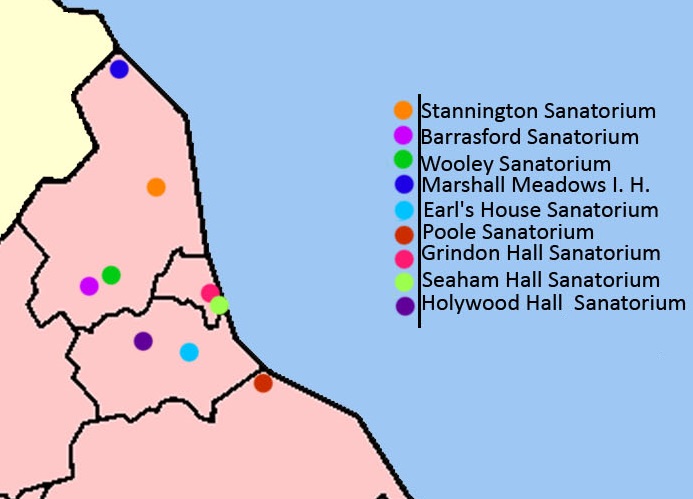As shown in our previous blog home visits were not possible for all Tuberculosis patients in the community, and the medical officer therefore looked to sanatoria as a means to both help sufferers and prevent its spread. Sanatoria began as open air resorts for wealthy patients in late nineteenth century Europe, usually located in mountains or spa areas. The idea spread and many were created for different types of clientele, religious groups, companies and even trade unions. However they were run, sanatoria were usually in the countryside, and the presence of pine trees was thought to bring benefit. Covered verandas protected patients from the elements when outdoors, or French windows allowed patients to enjoy fresh air inside. Firm adherence to rules, hygiene, feeding-up, and an increase in movement and work were thought to both improve the patient and prepare their return to health.
The Stannington files have revealed that children were admitted from or to a range of 58 hospitals and sanatoria, as far away as Great Ormond Street. The files show Stannington in the context of the wider tuberculosis movement in the UK and even abroad, as during WWII there were Stannington patients who were refugees and evacuees, who had attended sanatoria and hospitals much further afield. Here we will examine Stannington’s connection with some of the local sanatoria.

Barrasford, Northumberland.
Situated on the moors north of Hexham, Barrasford shared much of its history with Stannington. It was funded by the raising of a public subscription, helped by a large donation from an individual, in this case William Watson-Armstrong (later Baron
Read moreThe travels of TB patients – other sanatoria from the Stannington patient files

